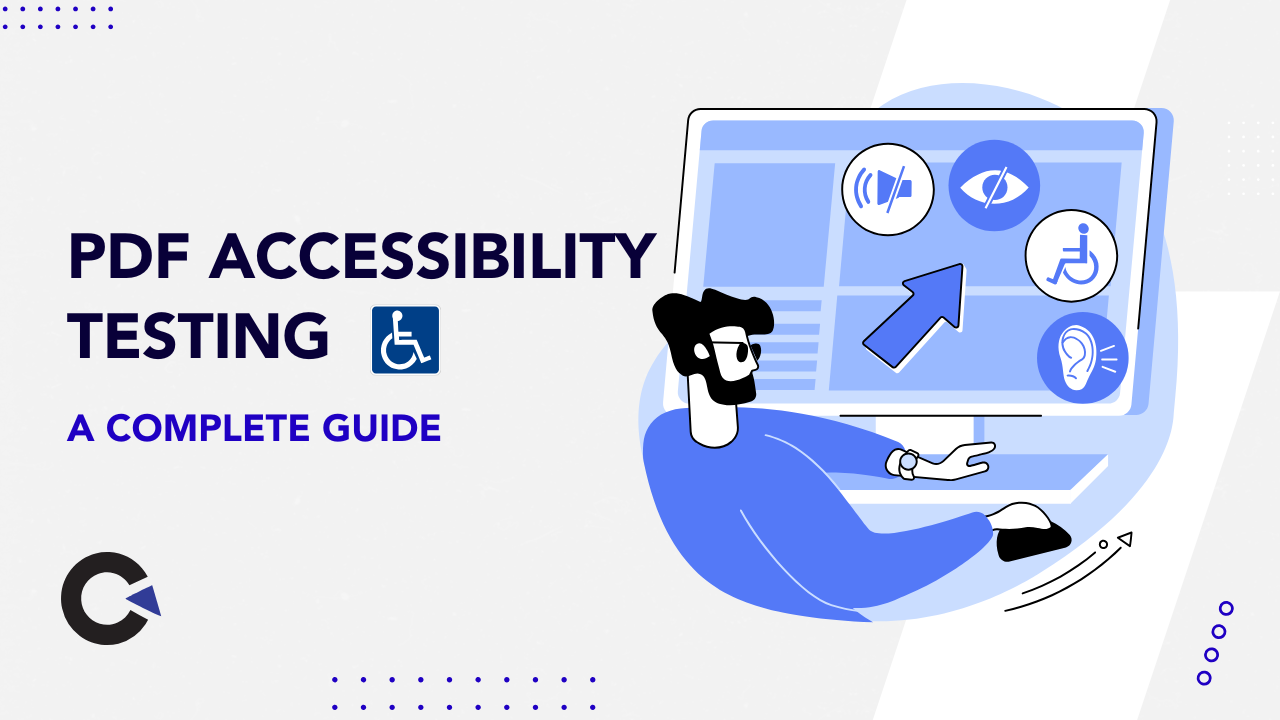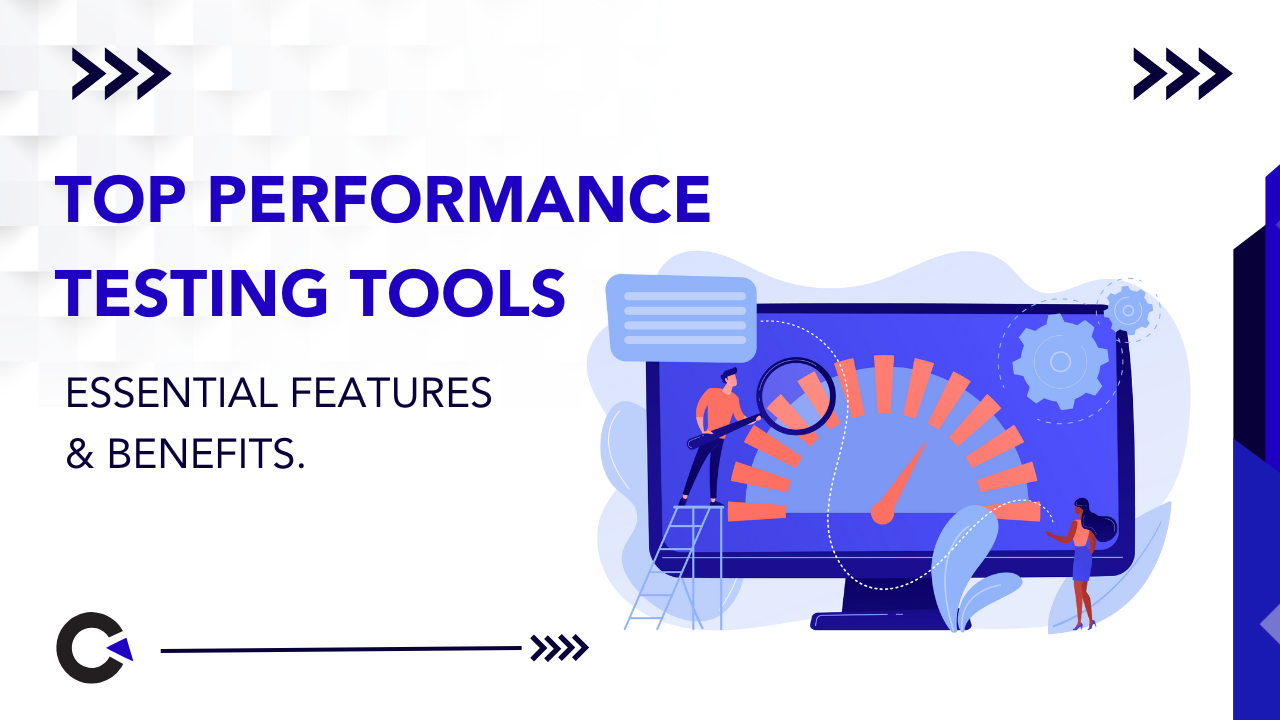
by admin | Sep 23, 2019 | Selenium Testing, Fixed, Blog |
In this blog article, you will learn how to execute JavaScript in Selenium using Python. As a software testing company, writing technical articles which are helpful for newbie automation testers gives us immense happiness.
Before using the snippets, please note that your scripts may fail unexpectedly due to cross-domain policies. Executing JavaScript in Selenium using Python should be your last resort since it does not mimic user actions.
Entering Value in Textbox
txtBox = driver.find_element_by_id("txt1")
driver.execute_script("arguments[0].value=arguments[1]",txtBox,"codoid")
Get Value
txtBox = driver.find_element_by_id("txt1")
print driver.execute_script("return arguments[0].value",txtBox)
Click Event
link = driver.find_element_by_link_text("Window1")
driver.execute_script("arguments[0].click()",link)
Storing and Retrieving Global Variables
driver.execute_script("window.variable1=arguments[0]","codoid")
print driver.execute_script("return window.variable1")
Scroll Page
driver.execute_script("window.scrollBy(0,150)")
Page Status
print driver.execute_script("document.readyState")
If the readystate returns ‘complete’, it confirms that the page and its resources have been loaded and parsed.

by admin | Aug 18, 2019 | Software Testing, Fixed, Blog |
Software Testing is undertaken essentially to detect glitches in a software application or package. Such activities are driven by the larger goal of ensuring a flawless customer experience with the end-product. However, certain issues pertaining to nomenclature remain inconclusive. The severity of a software bug and the priority assigned to such a bug connote a variety of things. The true meaning of these terms, if left unexplored, exerts a certain stress on the outcomes of Quality Assurance services.
Severity: Many Grades
This term is deployed by Software Testing professionals to denote the absolute gravity which defines an undesirable incident during the use of a software product. Every QA Company must acknowledge the severity of such an incident and assess the impact of such a glitch on product performance. In line with this, test professionals may grade severity in terms of ‘critical’ or ‘major’ or ‘minor’ or ‘low’. Certain experts aver that the assigned level of severity to a bug implies the high quality of testing practices undertaken by a Software Testing Company.
Severity: How Critical?
The QA Services offered by a Software Testing Company consider the impact of severity in broad brush strokes. They define the term as the extent to which a particular bug/defect/glitch could create an impact on the normal operation of a software application. Some instances of severity appear when an e-commerce app fails to load despite repeated inputs; a digital shopper faced with an odd situation wherein a shopping app accepts an order but cancels it after a certain interval of time.

Severity: Critical
Glitches in software products that seriously hamper the efforts of Software Testing professionals represent critical grade of severity. Such bugs deserve the focused attention of testers who must work to attain immediate resolution. Similarly, critical bugs can result in the repeated crashing of an application, wherein testers are unable to proceed with assigned QA Services. In a similar vein, catastrophic system failures qualify for critical grade of severity. For instance, email systems that crash immediately after a user has entered credentials represent critical bugs that destroy the user experience; the QA Services offered by test professionals must remediate these immediately.
Priority
This term implies the act of prioritizing a defect based on the demands of business requirements and the severity of the defect. Priority connotes the importance (or urgency) of remediating a glitch in modern software applications. Typically, testers working in the domain of modern Software Testing services must invoke priority by viewing a malfunctioning product from the perspective of the end user. In common terms, bug priority can be assigned various values such as ‘low’ or ‘medium’ or ‘high’ or ‘immediate’. Veteran testers advocate the use of said matrix because prioritizing a bug in the correct manner helps boost the quality of the software development life cycle.
Priority: Conflict with Severity
Legacy Internet browsers typically remain behind the curve in terms of aesthetics and pure functionality. Such a scenario may spotlight the deficit in legacy browsers by rendering sub-standard views of an application. This, per se, indicates a major glitch in the code underlying the legacy browser, thereby indicating a high level of severity. However, Quality Assurance professionals may allocate a low priority to this glitch owing to the fact most Internet users update their browsers, thereby ruling out chances of mass malfunction in the display system. In view of this, the typical QA Company may not consider the glitch worthy of immediate attention at any level.
High Priority
An experienced team of Software Testing professionals may consider muddled views of a website to be a high priority target for bug remediation. Such an action finds justification since a late-edition browser would be unable to create sharp displays of a website. Hence, the code underlying the website deserves the immediate attention of QA Services professionals who must re-calibrate the visual representation of said website. Experts note that there is the lack of serious performance issues in such a scenario; however, Software Testing professionals must remediate the glitch in the interests of driving a smooth user experience.
In Conclusion
This analysis should encourage Quality Assurance engineers to consider high priority bugs at the expense of those marked high severity. This choice of action flows from the necessity of directing human empathy to the common user of digital products and services. Moreover, testers employed by a QA Company should work to develop a deep understanding of how various bugs and flaws may impact the experience of an end user. Such awareness should form the core rationale that powers the range of services that center on Quality Assurance. Additionally, product managers of a software application must work to create clear distinctions between the terms ‘severity’ and ‘priority’. Radical improvements in the scope and performance of Software Testing services would follow, and we excel in this realm as well. Connect with us to keep your applications and software bug free and of the highest quality.

by admin | Aug 25, 2019 | Software Testing, Fixed, Blog |
In the modern-day Software Engineering arena, Continuous Testing is a key mechanism for enabling the delivery of quality software at speed. With the help of the Continuous Testing process, executed through automated tests, an organization can get instant feedback on the business risks linked to its newest software release candidate.
From the perspective of a business, any top software testing company must be equipped to convey the benefits of Continuous Testing to the management of an organization. Towards that end, testers should learn the art of explaining the Continuous Testing process to the management in an effective manner.
Accentuate the Goals and Priorities of the Organization
With an organization chiefly focused on its goals and priorities, testers can heighten the need for Continuous Testing to the management by elucidating the alignment of testing and software quality efforts with business expectations. It should clearly be pointed out that the Continuous Testing helps create a prioritized list of tasks. The different teams can focus their efforts on the quality tasks that are consistent with the objectives of the organization. The fact is that the workforce of a company would need to focus on the core business, and it makes business sense to outsource QA and Software testing to a renowned and highly expert company.
Talk about the Advantages of a Test-first Approach
It is pertinent that testers talk about a test-first approach when they explain Continuous Testing to the management. A test-first approach can increase test coverage, enabling the testing team to ensure the working of the features of an application as expected. Continuous Testing also enables testers to quickly discover whether any change breaks the existing automated checks or whether some other unanticipated conditions need to be addressed. Hence, testers can focus on delivering a quality product.

Emphasize the Possibility of Speedy/Frequent Delivery of Quality Software
Software testing companies generally espouse Continuous Testing by emphasizing on the ability of the process to deliver quality software quickly and continually. Since quality software can meet expectations for an acceptable risk level, testers should communicate to the management the heightened gains in terms of reduced time and effort in finding and fixing bugs. This can enable developers to prevent the progression of bugs to a subsequent stage in the software development lifecycle (SLDC). Thus, Continuous Testing ensures that no major issues exist within the software at any stage of development.
Emphasize the Possibility of Speedy/Frequent Delivery of Quality Software
Software testing companies generally espouse Continuous Testing by emphasizing on the ability of the process to deliver quality software quickly and continually. Since quality software can meet expectations for an acceptable risk level, testers should communicate to the management the heightened gains in terms of reduced time and effort in finding and fixing bugs. This can enable developers to prevent the progression of bugs to a subsequent stage in the software development lifecycle (SLDC). Thus, Continuous Testing ensures that no major issues exist within the software at any stage of development.
Highlight the Benefits of Optimizing the Testing Process
With Agile and DevOps methodologies pivoting around continuous improvements, testers should put the spotlight the need for regular assessment and tight feedback loops for optimizing the testing process. The management should be apprised about the importance of metrics amassed because of the constant execution of a broad set of continuous tests all through the SDLC. The amassed metrics can be re-assessed for increasing the effectiveness of the tests. The repeated review and optimization of the test suite is also beneficial for eliminating redundancy and maximizing business risk coverage.
Stress on the Significance of Actionable Feedback at Different Delivery Stages
Continuous Testing holds immense significance with regard to delivering actionable feedback. This aspect should be emphasized when addressing the management and highlighted against the backdrop of the productive impact of feedback at various stages of the delivery pipeline. The management should have adequate knowledge about the role of Continuous Testing in enhancing code quality because of the potential improvements resulting from regular feedback. In addition, extensive automated testing can realistically determine the end-user experience across the associated front-end and back-end technologies.
Draw Attention to Early Detection of Risks
Testers need to ensure that the management understands the importance of Continuous Testing by underscoring the significance of designing tests for detection or prevention of risks associated with the release of the software. With Continuous Testing, functional requirements can be tested by using API testing, Unit Testing, Integration Testing, and System Testing. Further, non-functional testing techniques like Static Code Analysis, Security Testing, and load Testing can determine whether an application meets the performance and security expectations.

Underline the Cost-saving Benefits of Continuous Testing
It is imperative for testers to highlight the cost-saving benefits of Continuous Testing. The management would be more inclined to take a favorable view of software testing services if the testing process would be timesaving and cost-effective endeavor for the organization. The comprehensive scope of Continuous Testing can enable testers to detect errors early in the development process. Therefore, leveraging Continuous Testing can yield substantial savings in cost, accelerate the software’s time to market, and generate sustainable revenue for the organization.
In Conclusion:
An expert software testing company must master the art of explaining the crucial Continuous Testing technique to the management from various perspectives. The management must be aware of the advantage of testing the software continuously to ensure a strong feedback system can be created for controlling business risks. In general, given the rapid pace and increasing complexity of software delivery, it is vital for an organization focused on releasing quality software on a continuous basis to endorse Continuous Testing. To work with experts in this realm and more – connect with us.

by admin | Aug 24, 2019 | Software Testing, Fixed, Blog |
Generating random test data during test automation execution is an easier job than retrieving from Excel Sheet/JSON/YML file. If you start maintaining dummy test data in an external file, it will increase test data feeding time before you begin the automated regression test suite.
You can generate random test data using Silly Python library if you have Selenium automated test suite in Python. Let’s see how to use it.
Installation
pip install silly
[/code]
How to use
import silly
name = silly.name()
print("my name is {}".format(name))
# my name is colonel beefheart
print("you should not contact me at {}".format(silly.email()))
# you should not contact me at [email protected]
number = silly.number()
print(number)
# 7
number_in_words = silly.numberwang()
print(number_in_words)
# Eighty Eight
silly.paragraph()
# Youssef Chiffon needs a cluster of white dances, badly.
# Cabinet Management Systems is the best company in Bagsberg.
# Armourshire is in North Testonia. Fear space!
silly.paragraph(length=1000)
# oh no! that was the length in SENTENCES!
# what have we done!
# oh well
# let's do this anyways:
#
# Cheekshop is the best company in Birmingplace.
# Cornelius Slabmove will braise a heart, seventy-two rum staffs,
# and one hundred and thirty-two plans. Mysteriousshire Plumbing
# is the best company in Coasttown. Your mom can't wait to punch
# one hundred and thirty-seven brown socks in Jerkhall....
[/code]

by admin | Aug 23, 2019 | Software Testing, Fixed, Blog |
Communication is a crucial soft skill that software testers must possess in order to complete a software testing project successfully. Proactive communication is the hallmark of a proficient test team because it enables the team members to correspond effectively with one another, avoid misinterpretation of information, and report defects efficiently to improve the quality of the software under testing. The competence and commitment of a QA company are generally evident from its well-equipped team of testers and a robust communication channel between them for delivering relevant solutions.

Communication Enables the Test Team to Work as a Cohesive Unit
Communication promotes a shared understanding of the objectives of the testing project among the testers working on the project. A Test Manager with good communication skills can clearly convey the roles and responsibilities of the members of the test team at different stages of the project – from test planning to product delivery. In a properly coordinated team, any issues affecting the testing process can be quickly resolved. Testers complement each other to work together as a cohesive unit and ensure the rapid delivery of a quality software product.
Communication Lets Testers Put Across Their Ideas Clearly
Interpersonal skills are extremely important for QA professionals especially in Agile and DevOps environments that focus on continuous development, continuous integration, and continuous delivery. Since it is the job of testers to examine the code thoroughly and log identified defects or errors, it is imperative for them to communicate their ideas from time to time. Adequate communication between the development and testing teams reassures the testers that their efforts are in line with the test requirements and performance needs. In addition, the sharing of ideas and suggestions can give everyone an opportunity to progress.
Communication Helps New Testers Easily Come Aboard a Testing Project
For the enhancement of the testing project, QA companies may sometimes make changes amid the testing lifecycle due to which new testers may join the project. In such an event, the past communication between the test team members can be very useful for the new entrants to the team. The transparency in team interactions allows new testers to assume prompt charge of their responsibility. Hence, communication is an excellent mechanism that helps new testers come aboard an ongoing project.
Communication Reinforces Vital Messages between Various Testing Teams
When various test teams undertake a testing project, communication is the most effective tool at the disposal of the Test Manager, to reinforce critical messages frequently. This enables the testers to focus on important guidelines and adjust to the changing requirements and changing schedules. Thus, reinforcement of critical messages fortifies the collaborative efforts and prioritizes the testing tasks. In particular, it gives the testers a clear understanding of the tasks and objectives as well as the perception of the client.
Communication Allows the Testing Company to Correspond with the Stakeholders
The best QA companies always strive to keep all the stakeholders in the software development process involved and informed when the software is under testing. Towards this end, regular communication with the stakeholders is essential for apprising them of the status of the testing project at any given point of time. Due to the fast-paced nature of the testing process, it is mandatory for the testing company to put a communication procedure in place to report the progress of the process to all stakeholders, thereby enabling them to know whether the process is yielding the expected outcomes or needs altering.
Communication Paves the Way for a Suitable Meeting Policy
A proper communication channel can facilitate a testing company to lay down a suitable meeting policy. With Agile and DevOps changing the software development scenario in recent times, a meeting policy is necessary for streamlining the process of communication between teams working from different geographical locations. As face-to-face meetings may not always be possible, top QA companies generally conduct meetings between different teams with the help of video conferencing tools like Skype and Google Hangouts.
In Conclusion:
Effective communication is the key to the successful completion of a software testing project. A systematic communication method used by a testing company unfolds a transparent and flexible approach which can augment the planning and execution of the project, encouraging the testers to perform their tasks efficiently. In addition, communication also enables the testing company to keep the stakeholders informed about how the project is advancing. Overall, communication lays the foundation for the growth of the test team, accomplishment of project objectives, and overall client satisfaction resulting from the delivery of a high-quality software product. Transparent communication is a culture we follow – connect with us to know more.

by admin | Aug 22, 2019 | E-Learning Testing, Fixed, Blog |
Online training and the e-learning industry have evolved to keep pace with the digital age. Popular e-learning programs and packages must undergo rigorous testing to prove their mettle for the demanding digital audiences and highly competitive market. Therefore, test engineers working in e-learning domain testing must perform quality assurance testing, acceptance testing, and deploy engagement analytics to test and improve online training modules. These forms of elearning testing ensure that users gain access to a value-driven product, with a seamless user experience.

Quality Assurance Testing
Software testers working for an elearning testing company would need to test the product for content and functionality. Content represents the core of elearning mechanisms, which makes it critical for testers to check the content acceptability against the style guide. Quality assurance also extends to testing the functional aspects of an elearning package. Hence, elearning testing engineers would need to check if a product functions seamlessly with multiple browsers, on multiple devices, and its ability to endure usage of multiple users with simultaneous access. Elearning packages positioned in remote servers must endure heavy digital traffic – this is an important aspect of quality assurance testing.
Acceptance Testing
A software testing team conducts acceptance tests to determine whether a software package or application matches business requirements and end-user needs. The different aspects of the interaction of actual users with an elearning package are tested in acceptance testing exercises. An elearning testing engineer, for instance, may wish to determine whether an e-learning module conforms to the requirements originally set out in the specification phase. In essence, acceptance testing seeks to determine how an e-learning course works in the real world and also, whether it retains the integrity to support a valid learning experience. Further, engineers may wish to test the navigation functions embedded in an elearning package, the incidence of any technical issues in the course of normal use, and other aspects.
Engagement Analytics
A core aim of elearning domain testing is to assess or examine the usage of a product in the online domain. Testing the metrics of user engagement can reveal several details that could serve to enhance the learning experience for end-users. Typically, a test engineer working with an e-learning testing company can probe the amount of time users spend on a certain page or section of a package, the time required by an average user to complete an elearning course, user locations, the types of devices used to access an e-learning module, and more. A close analysis of these metrics can empower package designers to drive higher levels of engagement with end-users.
Key Ideas and Concepts
Information overload can mar an e-learning experience for end-users. Therefore, elearning testing engineers must test such packages for their ability to present key ideas and concepts succinctly. This represents a form of functional testing that could potentially attract new audiences and enhance the appeal of a product in e-learning aftermarkets. The testing should help create a test that centers on key ideas and concepts so that learners can direct their attention and concentrate on the necessary information as part of their online training experience.
In Conclusion
Test engineers that specialize in elearning domain testing can effect significant improvements in the quality of elearning courses, applications, and packages. The notations, findings, and feedback from such testing can raise the levels of quality and functionality for online training programs. To gain a competitive advantage and enhance the quality of online training provided by your company, connect with us and of course for all your software testing needs.
































